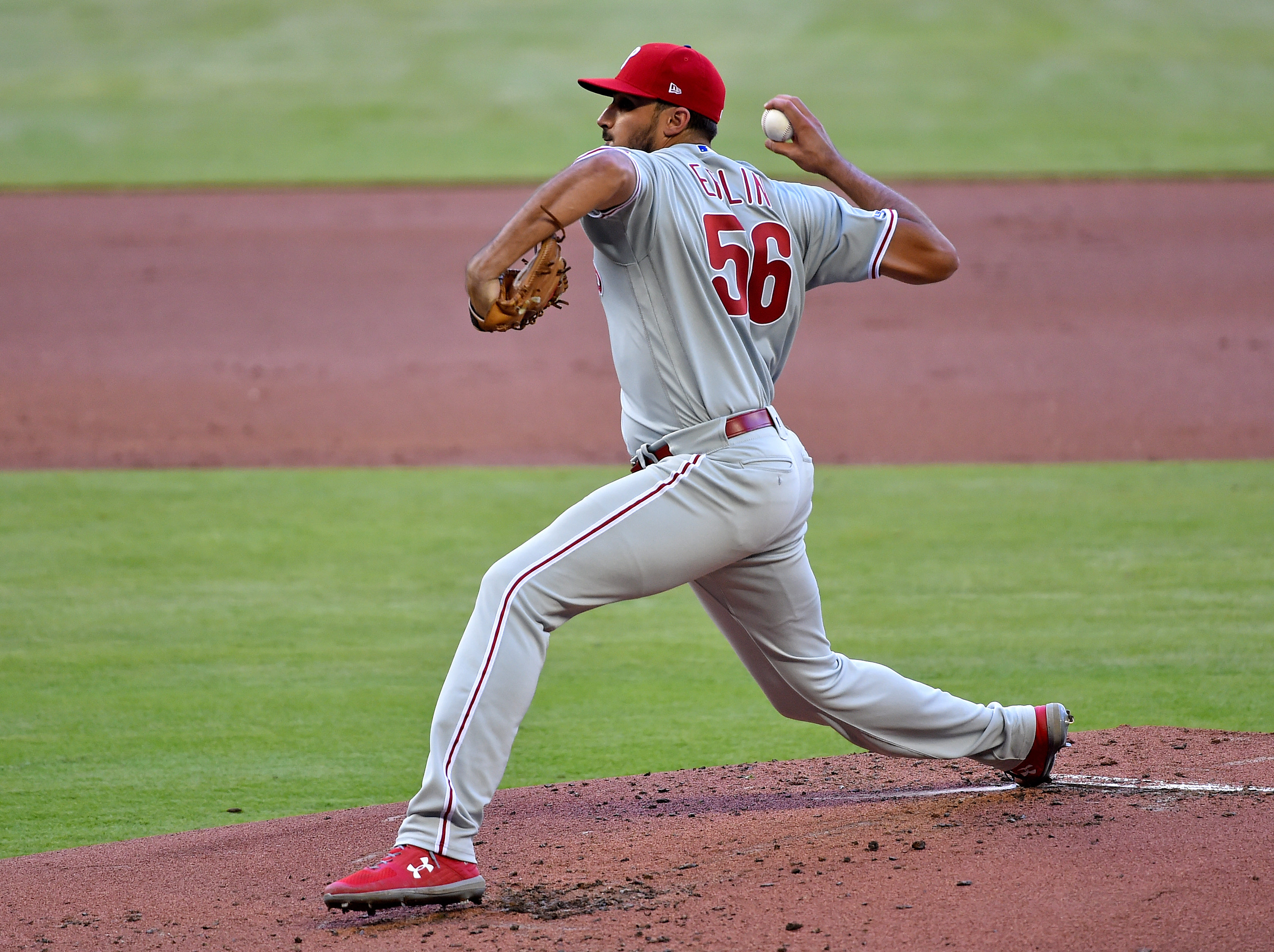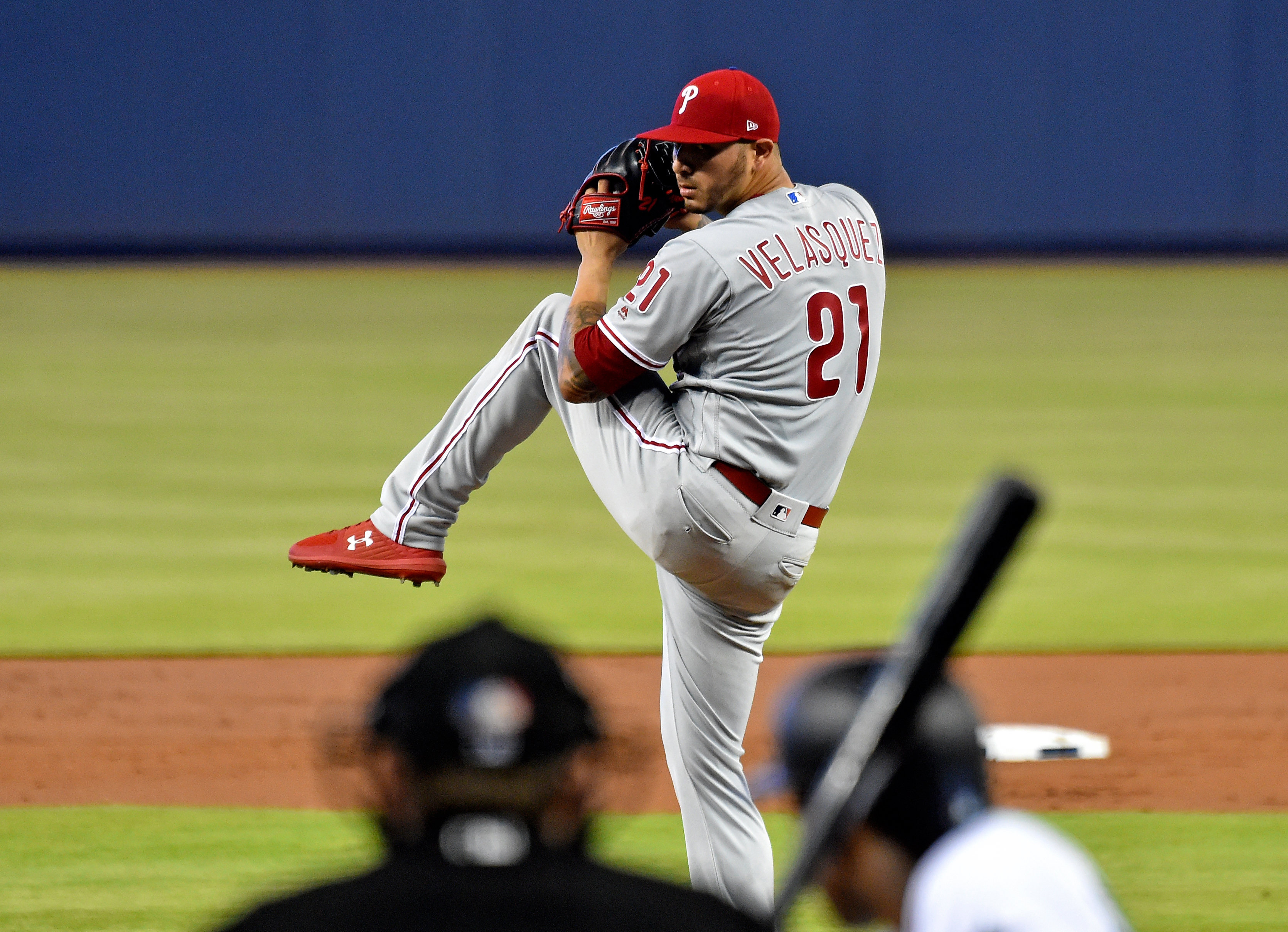
Eflin should be one of the more interesting pitchers to watch develop in 2019. After making huge improvements/changes to his repertoire in 2018, he still needs to refine his approach to maximize his potential. Despite his promising March and April, Eflin is still figuring things out with how to throw his generally-new pitches from 2018. It would not be surprising to see his usage statistics change even more as the season goes on. Eflin is a 6-pitch pitcher and has seen major changes to a few of them. When combining his fastball, sinker, and cutter into the same category, Eflin has thrown a hard pitch about 24% more. Eflin has thrown a four-seamer, sinker, or cutter 84.3% of the time so far, a very high rate for any pitcher, especially a reliever. This has accompanied a nearly 20% drop in slider usage overall.
The increase in fastball rate isn’t going to all three pitches. In fact, Eflin is throwing his four-seamer a lot less in 2019 compared to the previous season as well. The biggest change is that Eflin is now tossing his cutter 39.1% of the time, his most often thrown pitch, coming off a season in which it was his least-thrown pitch. His cutter is somewhat in between his four-seamer and slider in terms of velocity and movement, and he has sided towards throwing his cutter instead of the other two more often than not.
More specifically, Eflin seems to be shying away from throwing either his four-seamer or slider on the first pitch of an at-bat. In 2018, Eflin’s cutter got a lower percentage of strikes than his four-seamer or slider on the first pitch, as well as producing a lower amount of whiffs while thrown with 2 strikes. Granted, Eflin did hit the strike zone with his cutter 53% of the time in 2018, but outside of that, it doesn’t seem as if the clear change in strategy is based on past performance. Eflin has gotten more movement on his cutter in his early showings in 2019, so maybe it ends up working out, but for now, it doesn’t seem clear whether or not a more cutter-oriented repertoire will help in the long-run.
Through 2 starts (and 1 relief appearance) Velasquez has arguably had the most success of anyone in the Phillies rotation. Coming off a game in which he carried a no-hitter into the 6th, Velasquez now has a 2.25 ERA. The underlying metrics paint an uglier picture, as he has thrown a below average number of pitches in the zone for the first time in his career and only has a SwStr% of 5.7%, 5th lowest among pitchers with 10 innings. 2019 is likely Velasquez’s final chance at proving he belongs in the long-term picture, and although he has a chance, he does need to improve from 2018 somewhere.

Similar to the other 4 in the Phillies’ rotation, Velasquez has mixed around his pitch mix. Notably, Velasquez has stopped throwing his changeup whatsoever. It’s uncommon for starting pitchers to not have a changeup, and this is the 2nd Phillies starter drop to minuscule levels of throwing a changeup. Even in 2018, Velasquez only really threw his changeup to left-handed batters. Given his career struggles againt lefties (.346 wOBA vs .311 for RHH), it makes sense for Velasquez to try to change his fortunes.
His changeup has been his worst pitch over the course of his career, only hitting the zone a third of the time, and going over the fence on 30% of flyballs. Overall, the PVal on his changeup was -2.63 per 100 pitches. Given that his whiff rate and ball rate on his fastball have still been worse against lefties than righties, there’s could be a belief that eliminating his changeup won’t affect his other pitches all that much.
To contrast, Velasquez has replaced the changeups he used to throw with increased usage of his four-seamer to lefties. This has also led to fewer sinkers. 18% more pitches to lefties have been four-seamers from Velasquez when comparing 2019 to 2018. When facing lefties over his career, Velasquez has gotten slightly more whiffs per swing on his four-seamer, but about double the number of groundballs. It will be interesting to see how Velasquez hold sup while attacking lefties with primarily a four-seamer, even when ahead of the count.
One final notable change in Velasquez’s pitch sequencing is his breaking balls when facing righties, specifically with 2 strikes. In 2018, he leaned towards his slider, throwing it 24% of the time with 2 strikes to RHH, compared to only 8% of curves. In a smaller sample size of 2019, those numbers have become 10% and 27%, respectively. Over his career, when facing right-handed hitters with 2 strikes, Velasquez has gotten 11% more whiffs per swing with his slider than curve. However, this year Velasquez is seemingly experimenting with a new curveball, as this year the pitch is 3 mph faster on average than 2018’s version. Once again, this is something to keep an eye on moving forward.
Add The Sports Daily to your Google News Feed!
